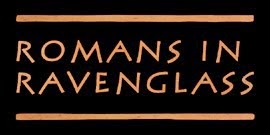Yet another week of
good weather, with only the occasional shower to dampen the baked
ground. Digging continued as long as possible in order to resolve
some remaining questions. Many finds were recovered, which will no
doubt assist with the dating and interpretation of the Roman
activity.
In Trench 1,
investigation of the Roman road confirmed that the core comprised a
number of large dumps of large stone rubble and metal-working waste.
A small trial trench in the middle of the road encountered yet
another layer of stone, at which point excavation ceased; the road
construction layers were clearly reached a considerable depth.
Layers of road construction, with Bob B levelling
To the north, there was
no evidence of a northern limit to the road, in the form of either a
kerb or a roadside ditch. Instead, the cobble surface extended up to
and around the side of the building. In this form, the road at this
point seems to have been more of an extensive open space over 20m
wide, presumably reflecting its position well within the vicus. The
cobble surface adjacent to the house had been laid over a dump of
metal-working waste, albeit ashier and lighter than the metal-working
debris layers encountered elsewhere in the trench. The construction
of the building and the uppermost road surface seems to have been one
operation.
Cleaning and planning cobbling alongside the building
Immediately to the rear
of the building, another trial trench encountered rubble and cobble
layers and a layer of metal-working waste, the latter extending
underneath the building and forming a well-drained construction
layer. Again, there was no indication of the end of the sequence was
going to be reached, and so excavation ceased here.
Excavating, cobbling and back wall of building
In Trench 2, excavation
of the long sequence of industrial deposits on the higher ground to
the south indicated the they were the result of metal-working, with
examples of mould fragments found. One interesting feature was an
amphora, set in a shallow cut – perhaps to contain water for
quenching as part of the metal-working process?
Fragments of the amphora washed and in the finds tray; burnt base of the amphora is in the centre of the picture
At the foot of the
metal-working deposits, a layer of cobbling seems to have formed the
original surface upon which the metal-working deposits accumulated.
Industrial deposits in the foreground
The main discoveries in
Trench 3 were to the rear of the building, where areas of burning and
cobbles point to activity similar to that in Trench 2.
Planning cobbling
A tidy post-medieval
stone-lined field drain was found cutting through the Roman building
foundations. Investigation of this feature showed that the
foundations were shallow, and rested on a thick layer of clay, which
in turn overlaid another layer of clay that could have formed the
original ground surface.
Field drain cutting the corner of the Roman building
By the following
Tuesday, the compound had been closed down and tthe trenches had been
backfilled for the final time.
DX Films were there to record this;
the second part of their film will cover the analysis of, and
reporting on, the excavation evidence.
So a big Thank You to
the volunteers for their hard work and enthusiasm. It was a pleasure
to work with you!
Kurt Hunter-Mann, Site Director, Romans in Ravenglass
York Archaeological Trust











